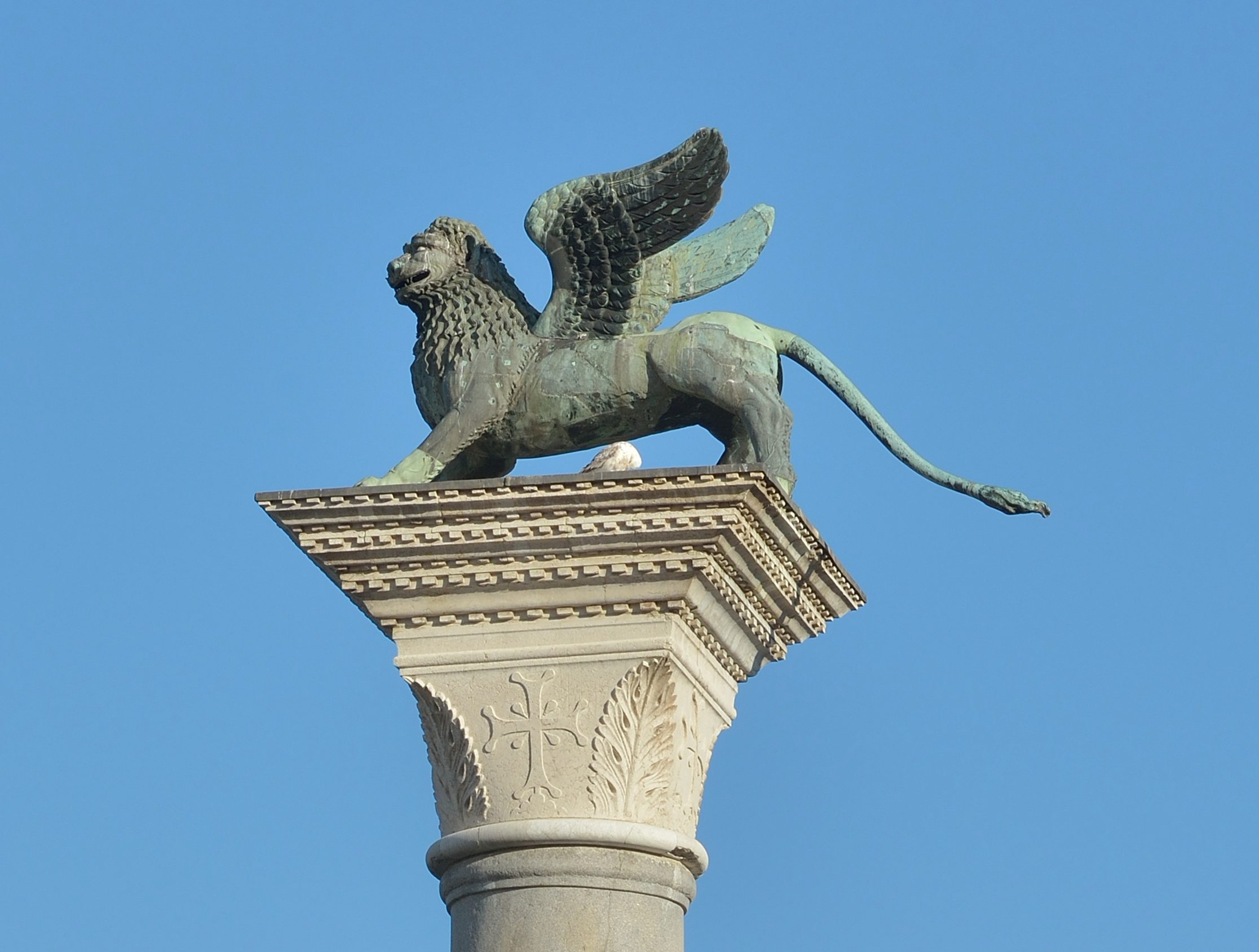Poised atop a column of Egyptian granite, the bronze “Lion of Venice” looks out on the sprawling Piazzetta San Marco. The massive statue has been a symbol of the Italian city since at least 1293 and is connected to the patron saint of Venice, Mark the Evangelist, often symbolized as a lion. However, a new study of the winged leonine artwork’s lead isotopes reveals that a major part of the statue is made of bronze from 8th-century China. Led by scholars from the University of Padua and the International Association of Mediterranean and Eastern Studies, the findings point to the global nature of trade during the Middle Ages and the impressive reach of arts from China’s Tang Dynasty (618–907 CE). It also underscores the increasing importance of isotopic analysis within art history.
During an International Conference in Venice on “Marco Polo, the Book and Asia: Research Perspectives Twenty Years Later” last week, a team of Italian geologists, archaeologists, chemists, and art historians presented the striking new find. Their paper divulged that lead isotopic analysis of the 13-foot (~four-meter) bronze statue revealed that a significant portion of the heavily repaired work originally came from southern China. Copper mines along the Yangtze River basin provided copper to China since at least the beginning of its Bronze Age, which began in 2000 BCE. The lead isotopes from the sculpture linked it back to these same copper mines in the 8th century CE.
Although previous scholars had hypothesized that the lion came from Eastern Anatolia (present-day Turkey) and may have originally depicted a griffin, the new research hypothesizes that it was likely a colossal, reassembled zhènmùshòu (“tomb guardian”). Such tomb guardians date back to the Warring States period (470–221 BCE), when carved wooden beings with antlers protected tombs from demons. Tomb guardians were incredibly popular during the Tang Dynasty and often the body of a lion along with antlers and wings. They were usually placed in pairs to guard a tomb. Many Tang-era tomb guardians can be traced back to Chang’an (present-day Xi’an), then the capital of the Tang Dynasty.
The research team noted that the “Lion of Venice” statue appears to have been shipped or transported in pieces at some point in time. The entire work weighs around three tons — 6,613 pounds and around 3,000 kilograms — and would have been a massive piece to transport whole.

The current association with the Tang tomb guardians is stylistic and may need more investigation going forward. In comments to Hyperallergic, art historian Amy Huang said that Tang Dynasty gilt bronze lions are perhaps better points of reference than the tomb guardians, which are usually glazed earthenware.
“These small gilt bronze sculptures usually appear in Buddhist context as the companion of Manjusri Bodhisattva or as a pair of guardians for Shakyamuni,” Huang said. Previous analysis of the “Lion of Venice” pointed to the statue being gilt, which would indeed be in line with the Tang-era bronze lions.
If the statue’s composite materials originated in southern China, how and when did it get to Venice? According to the scholars, it may have traveled along the Silk Roads to the Eastern Mediterranean first. Over the past decade, Silk Road researchers such as Xiao Li and Xinru Liu have done much to reconstruct the caravan and maritime routes that moved goods through the webbed network and functioned from the 2nd century BCE until 1453 CE. The routes spanned over 4,350 miles (~7,000.7 kilometers) and brought much more than just silk from China to the Mediterranean: Chinese bronze mirrors were extremely popular in the early Middle Ages, as were spices, medicine, and prized silk.
Another clear question underlying this discovery is whether the statue was purchased or taken. The first mention of the lion in Venice doesn’t appear in text until 1293, but in the decades prior, Venetians had engaged in extensive pillaging of art, statues, and metals from the Byzantine Empire during the Fourth Crusade and the sack of Constantinople in 1204, when the famed bronze “Horses of Saint Mark” were removed from a monument and installed on the facade of St. Mark’s Basilica. The Byzantine historian Niketas Choniates bemoaned the Venetian love of taking and melting down bronze statues in particular, writing that “they covetously eyed the bronze statues and consigned these to the flames. The brazen Hera standing in the Forum of Constantine was cast into a smelting furnace and minted into coins; her head could barely be carted off to the Great Palace by four yokes of oxen.”
In the Middle Ages, Venetians were known for their commercial prowess. But in the 13th century, bronze arrived in the city largely by way of crusading and plundering. However, the city also embraced the global with ardor. While it is unknown just how and when the statue got to Venice, medieval historian David Perry told Hyperallergic that city-dwellers saw the global as a positive.
“Medieval Venetians found non-local origins a positive element and liked to emphasize them in their rituals, displays, and narratives,” he said. “Lots of medieval cities deployed spolia, of course, but often in attempts to craft narratives that localized the foreign. Venetians didn’t do that. Being from somewhere else was always a feature.”
Mystery still surrounds the “Lion of Venice.” Yet the new study emphasizes the connectivity of the medieval world, the accomplished artisans of Tang-era China, and the significance of such isotopic analysis today. The “new science of history” is rapidly reshaping the fields of art history and archaeology in important ways, aiding in revised understandings of the diets, diseases, trade, and artwork of the Middle Ages. Perhaps now, when tourists look up at the statue from down below, they will not only reflect on the Italian port’s storied history, but also the global network whose traces still surround us to this day.

